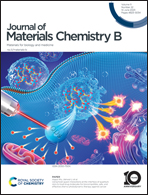A pDNA/rapamycin nanocomposite coating on interventional balloons for inhibiting neointimal hyperplasia
Abstract
Drug-coated balloon (DCB) is a therapeutic method that can effectively deliver antiproliferative drugs such as paclitaxel and rapamycin (RAPA) with no permanent implants left behind. However, delayed reendothelialization due to the toxicity of the delivered drugs leads to poor therapeutic effects. Here, we propose a new design of DCB coating, which incorporates both vascular endothelial growth factor (VEGF)-encoding plasmid DNA (pDNA) that can promote endothelial repair and RAPA into protamine sulfate (PrS). We demonstrate that the PrS/pDNA/RAPA coating had stability and good anticoagulation properties in vitro. We further show that the coating exhibited excellent transfer capacity from balloon substrates to vessel walls both in vitro and in vivo. Furthermore, the PrS/pDNA/RAPA coating effectively inhibited neointimal hyperplasia after balloon-induced vascular injuries through the down-regulation of the mammalian target of Rapamycin (mTOR) and promoted endothelium regeneration through increased expression of VEGF in vivo. These data indicate that our nanocomposite coating has great potential for use as a novel coating of DCB to treat neointimal hyperplasia after vascular injuries.

- This article is part of the themed collection: 2023 Journal of Materials Chemistry B HOT Papers


 Please wait while we load your content...
Please wait while we load your content...